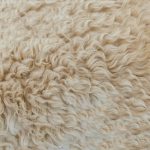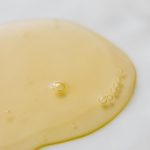You’ll find polyamide fabric is a great choice if you want something strong, lightweight, and quick-drying. It’s tough enough to resist wear and keeps its shape after many washes. Plus, its smooth texture feels comfortable against your skin. You should know it can hold odors and isn’t the best with heat or sun exposure, but for activewear and everyday use, it performs well. Keep exploring to uncover how it stacks up against other fabrics and how to care for it.
Table of Contents
Key Takeaways
- Polyamide is a strong, durable synthetic fabric ideal for activewear and outdoor gear due to its abrasion resistance and shape retention.
- It dries quickly and has a smooth texture, offering comfort and reducing skin irritation during physical activities.
- Polyamide resists wrinkles and maintains elasticity, enabling long-lasting wear without losing form or stretch.
- The fabric can retain odors, generate static, and is less UV resistant, requiring careful maintenance and limited sun exposure.
- Despite some limitations, polyamide’s lightweight, quick-drying, and durable traits make it a highly practical fabric choice.
What Is Polyamide Fabric?
Polyamide fabric is a synthetic material known for its strength and durability. When you choose polyamide, you’re opting for a fabric made primarily from nylon fibers, engineered through polymerization. This process gives polyamide its lightweight yet resilient nature.
You’ll find it widely used in activewear, lingerie, and outdoor gear because it holds up well under stress and resists wear. Unlike natural fabrics, polyamide doesn’t absorb much moisture, which means it dries quickly and maintains shape.
It also feels smooth against your skin and stretches comfortably without losing form. By understanding what polyamide is, you can better appreciate why it’s popular in various clothing and textile applications, offering a balance between performance and comfort.
Key Properties of Polyamide
You’ll appreciate how polyamide stands out for its durability and strength, making it ideal for everyday wear.
It also wicks moisture away from your skin, keeping you dry and comfortable.
Let’s explore how these properties make polyamide a popular fabric choice.
Durability and Strength
When you need a fabric that can withstand everyday wear and tear, this material stands out for its exceptional durability and strength.
It resists abrasion better than many other fibers, making it ideal for activewear and outdoor gear. You’ll find that polyamide maintains its shape and integrity even after repeated use and washing.
Unlike natural fibers, it doesn’t easily tear or fray, so your garments last longer. Its high tensile strength means it can handle stretching without breaking, which is perfect if you want clothing that moves with you.
Plus, it recovers quickly from wrinkles and creases, keeping your items looking fresh.
Choosing this fabric means investing in long-lasting, reliable textiles that won’t let you down during your daily activities.
Moisture Wicking Ability
Although synthetic, this fabric excels at pulling moisture away from your skin, keeping you dry and comfortable during physical activities.
Polyamide’s moisture-wicking ability means sweat doesn’t cling to your body, reducing that sticky, uncomfortable feeling. It quickly transports moisture to the fabric’s surface, where it can evaporate faster. This makes polyamide ideal for sportswear, activewear, and outdoor clothing.
You’ll appreciate how it helps regulate your body temperature, preventing overheating. Plus, it dries faster than many natural fibers, so you won’t stay damp for long.
Whether you’re hitting the gym or hiking, polyamide guarantees you stay fresh and comfortable. Its moisture management enhances performance and comfort, making it a smart choice if you want functional, breathable clothing.
Advantages of Using Polyamide
Since polyamide fibers are incredibly strong and lightweight, they offer excellent durability without weighing you down.
You’ll find polyamide fabrics resist wear and tear, making them ideal for activewear and outdoor gear. They dry quickly, so you stay comfortable even during intense activities.
Thanks to their smooth texture, polyamide garments feel soft against your skin and reduce irritation. They also have great elasticity, allowing your clothes to retain shape and fit nicely after repeated use.
Plus, polyamide is easy to care for—it resists wrinkles and dries fast, saving you time.
With its ability to blend well with other fibers, polyamide enhances fabric performance without compromising comfort.
Disadvantages and Limitations of Polyamide
Despite its many benefits, polyamide does have some drawbacks you should consider before choosing it for your clothing or gear.
First, polyamide tends to retain odors, so your garments might require more frequent washing than natural fibers.
It’s also prone to static electricity, which can be annoying and uncomfortable.
Additionally, polyamide isn’t very UV resistant; prolonged sun exposure can weaken the fabric and cause fading.
You should also know that polyamide isn’t as breathable as some other materials, which might make you feel hotter during intense physical activity.
Ultimately, while it’s durable, polyamide can melt or deform under high heat, so you need to be cautious when ironing or drying.
Understanding these limitations helps you make an informed choice.
Common Applications of Polyamide Fabric
Knowing the limitations of polyamide helps you understand where it performs best. You’ll find polyamide widely used in activewear and outdoor gear because it’s lightweight, durable, and moisture-wicking.
When you wear hiking pants or running shirts made from polyamide, you benefit from its quick-drying properties. It’s also common in swimwear, thanks to its resistance to chlorine and saltwater.
If you’ve ever used a nylon backpack or a tent, you’ve experienced polyamide’s strength and abrasion resistance firsthand. Additionally, polyamide appears in lingerie and hosiery because of its elasticity and smooth feel.
How to Care for Polyamide Clothing
To keep your polyamide clothing looking great, you’ll want to follow some simple washing tips like using gentle cycles and mild detergents.
Proper storage is just as important to maintain the fabric’s shape and durability.
Let’s explore the best ways to wash and store your polyamide garments.
Washing Tips
When you care for polyamide clothing properly, you can keep it looking fresh and extend its lifespan.
Always check the care label first, as some polyamide blends may have specific instructions. Use cold or lukewarm water to wash your garments, as hot water can damage the fibers. Choose a gentle cycle on your washing machine to prevent wear and tear.
Avoid bleach or fabric softeners, which can break down polyamide fibers over time. Instead, opt for mild detergents designed for delicate fabrics. If you wash by hand, gently agitate the fabric without wringing.
After washing, air dry your polyamide clothes away from direct sunlight and heat sources to maintain their shape and elasticity. Following these tips will help your polyamide clothing stay in great condition.
Storage Guidelines
Proper washing keeps your polyamide garments in good shape, but how you store them plays a big role too.
To maintain their durability and appearance, always store polyamide clothes in a cool, dry place away from direct sunlight. Sunlight can degrade the fibers and cause fading.
Avoid hanging heavy polyamide items for long periods, as this can stretch the fabric; instead, fold them neatly. Use breathable storage containers or cloth bags to prevent moisture buildup, which can lead to mildew.
Keep your polyamide pieces away from rough surfaces or items that might snag the fabric.
Comparing Polyamide to Other Fabrics
Although many fabrics offer unique benefits, polyamide stands out for its exceptional strength and elasticity. When you compare it to cotton, polyamide is more durable and resistant to wear, making it ideal for activewear.
Unlike polyester, polyamide feels softer and offers better moisture-wicking, keeping you dryer during workouts. Compared to natural fibers like wool or silk, polyamide is less prone to shrinking and dries faster, which simplifies care.
However, it’s less breathable than cotton or linen, so it mightn’t be your first choice for hot weather. If you want a fabric that balances durability, stretch, and easy maintenance, polyamide is a strong contender.
Just consider your specific needs and environment when choosing the best fabric for your wardrobe.
Frequently Asked Questions
Is Polyamide Fabric Environmentally Friendly?
Like a double-edged sword, you’ll find polyamide isn’t very environmentally friendly since it’s petroleum-based and non-biodegradable. However, you can reduce impact by choosing recycled polyamide, which helps lower waste and energy use.
Can Polyamide Cause Allergic Reactions?
You can experience allergic reactions to polyamide, especially if you have sensitive skin. It’s rare but possible, causing itching or redness. Always test a small area first if you’re prone to fabric allergies.
How Does Polyamide Fabric Perform in Extreme Weather?
Imagine sweating in a raincoat that dries fast—polyamide does that. It handles extreme weather well by wicking moisture and resisting wind, so you won’t feel soaked or chilled. You’ll stay comfortable, no matter the conditions.
Is Polyamide Fabric Biodegradable?
You’ll find that polyamide fabric isn’t biodegradable because it’s a synthetic material made from petroleum. It can take decades to break down, so you should consider its environmental impact before choosing it for your clothing or gear.
What Are the Best Brands Using Polyamide Fabric?
You’ll find brands like Patagonia, Nike, and Lululemon use high-quality polyamide fabrics for durability and comfort. They focus on performance and sustainability, so you can trust their polyamide products to last and feel great.
- Characteristics Of Polyamide - July 1, 2025
- Can You Tumble Dry Polyamide - July 1, 2025
- Can You Machine Wash Polyamide - July 1, 2025







